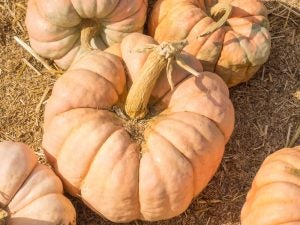It’s that time of year again — the one where pink pumpkins begin popping up all over farms and Facebook. Businesses, youth organizations such as FFA, and farms grow and sell these pink-hued squash in the name of breast cancer awareness, funding, and support.
Really, it’s a perfect fundraiser with October on the horizon and the month representing Breast Cancer Awareness. According to the Centers for Disease Control and Prevention, breast cancer is still one of the leading causes of death among women. Each year in the United States, about 264,000 cases of breast cancer are diagnosed in women and about 2,400 in men. About 42,000 women and 500 men in the U.S. die each year from breast cancer.
One such fundraiser is being run by an FFA member who is raising pink pumpkins as part of her SAE project. Natalie Maas of Wisconsin will be donating 50 percent of all her pumpkin sales to the Pink Pumpkin Project.
In Maine, a propane shop owner is selling pink pumpkins to profit the Champion the Cure Challenge to help cancer patients in the state. Owner, Pat White has been growing a variety of pink-hued squash for the last six years as part of his annual Pat’s Pink Pumpkins. A raffle will also be held for pumpkins painted by Nakomis art students to benefit the challenge. The painted pumpkins serve a dual purpose, also helping patients to know that they’re being thought of.

Cornucopia Farms in Indiana will also be donating $1 of every pumpkin sold to the Pink pumpkin Patch Foundation and the American Cancer Society.
There are a number of pumpkin varieties that are grown with a pinkish hue for the cause of breast cancer fundraising. One of the best-known varieties may be the Porcelain Doll pumpkin, an F1 hybrid that’s good for more than just fundraising. Growers say that the flesh is good for pies, soups, canning, and the pumpkins have a resistance to powdery mildew.


